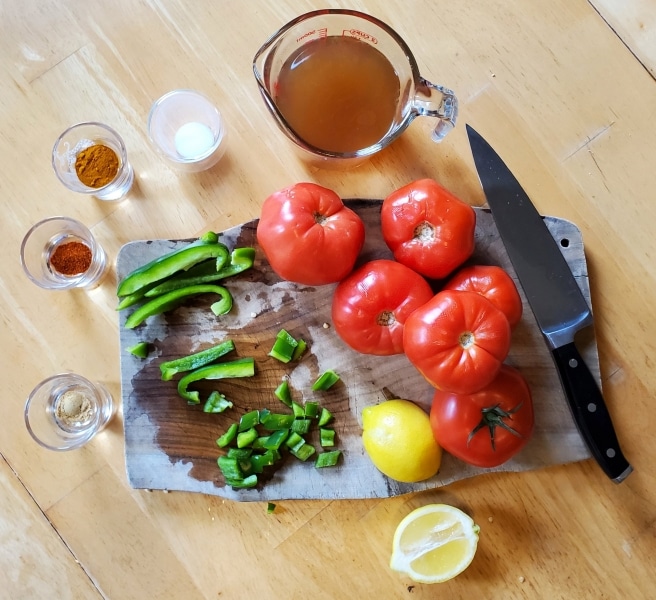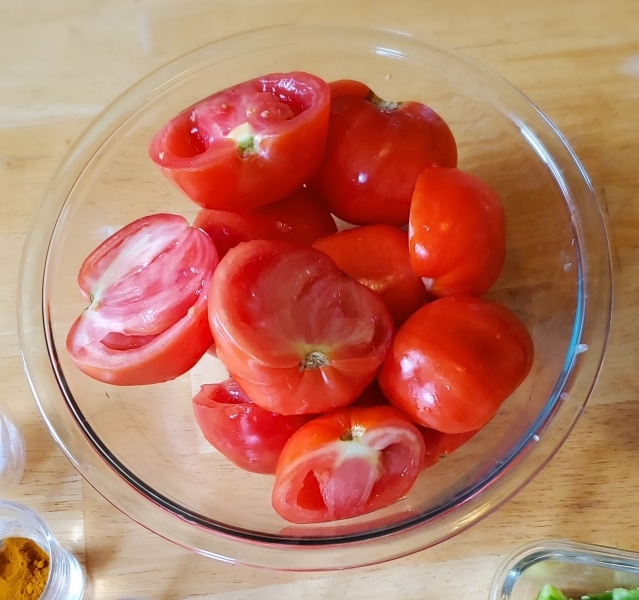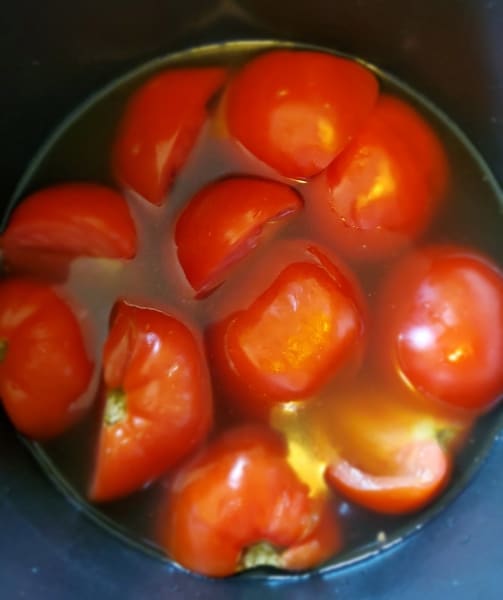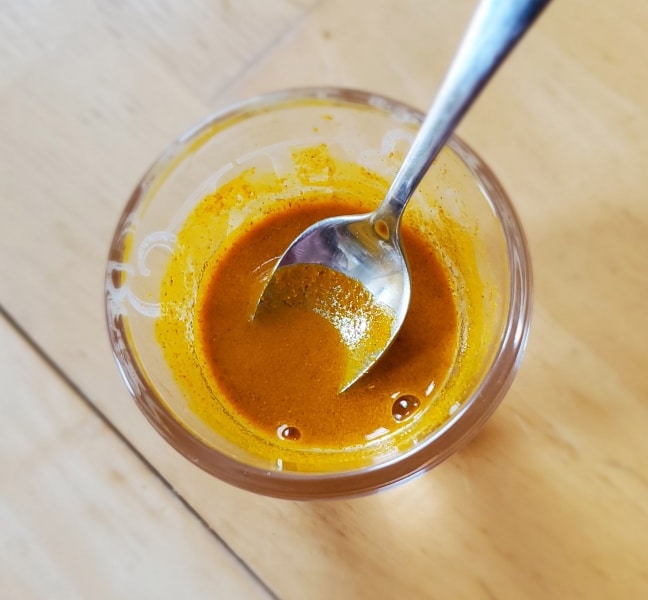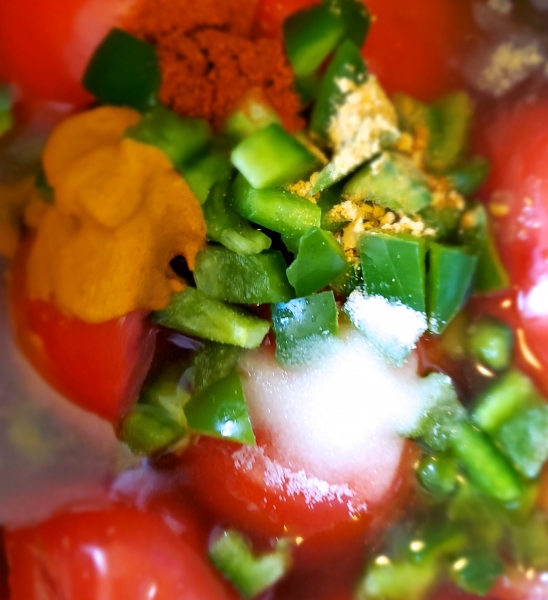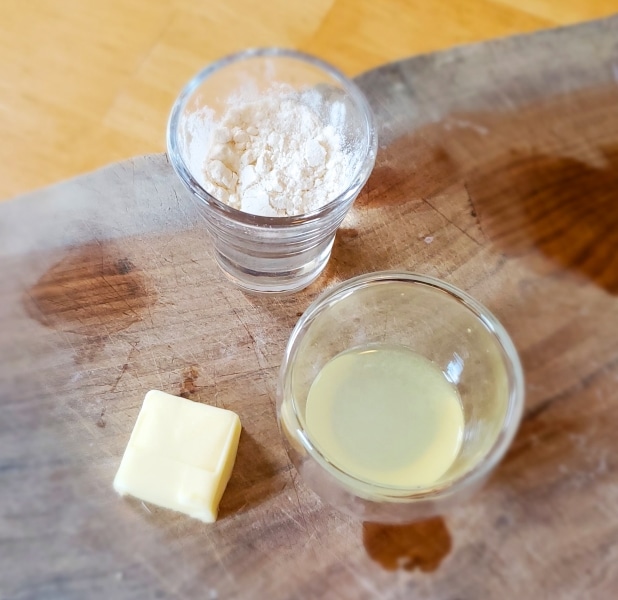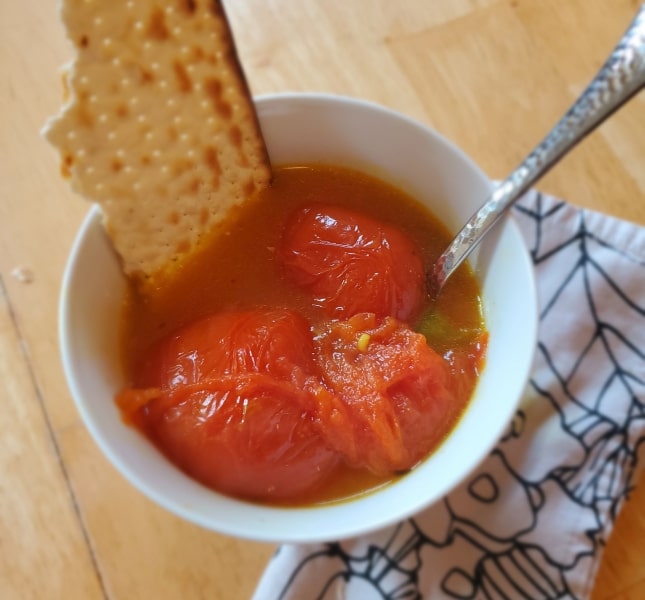Indian Stew of Tomatoes
Katie Maxwell, Visitor Services Coordinator
This 1897 recipe can be found on pages 78 and 79 of 35 Receipts from “The Larder Invaded” by William Woys Weaver. After artichokes, this recipe is practically effortless. I am using the original recipe here. The instructions are pretty clear, however, the ingredients are embedded within the recipe so I will be listing them as we go.
Boil six smooth tomatoes, cut them into halves, and press out the seeds;
Ok, so I ended up doing the first step backwards. I cut them in half first, pressed out the seeds, and then boiled. In my defense, I really didn’t want to handle boiling hot tomatoes. I don’t think the order here makes a huge difference.
Put them into a saucepan, add
½ green pepper, chopped
1 teaspoonful of salt
1 teaspoonful of turmeric dissolved in a little cold water
Dr. Weaver recommends using curry powder here instead of turmeric. His team tasted a metallic flavor (79) when they tested the recipe. I personally never noticed a metallic flavor from turmeric so I opted to go ahead and use the turmeric.
½ teaspoonful of pepper
The original recipe doesn’t specify what kind of pepper to use. Dr. Weaver used cayenne, so that is what I am going to use. However, he only used ⅛ teaspoon. Please, (insert eyeroll here) I grow habanero peppers; I’m using the ½ teaspoon.
¼ teaspoonful of ginger
Cover tomatoes with stock. If you have chicken bones, they may be added, and you may then use water.
I used homemade stock. Making stock is very easy. If you roast a chicken one day for dinner, just save the carcass in the freezer. Throughout the week, save veggie scraps like carrot peels and onion skins (nothing in the cruciferous family). When the bag is full, dump the contents in your largest pot, cover with water and let simmer throughout the day while you go about your business. By evening, it should be done, just strain and store. This is an especially good project to do while we are all stuck at home. It freezes nicely as well.
Cook slowly for one half hour; see that the tomatoes are not robbed of their shape;
One or two might have gotten mushy, but I think most of my tomatoes managed to hold their shape.
Add one tablespoonful of lemon juice, one tablespoonful of butter, and one tablespoonful of flour moistened in a little cold water;
I added water to the flour just a tiny bit at a time and stirred until it was pourable.
Bring to the boiling point, and serve.
Pictured here with leftover matzo.
This is one of the daintiest ways of serving this vegetable.
I can’t really speak to the dainty part, but this is pretty good. It has a kick, but it is not too spicy. Matzo was a decent accompaniment, but some crusty bread would be perfect. If I make this again, though, I’ll probably dice the tomatoes to make them easier to pick up with a spoon. Canned tomatoes would also work out well when tomatoes aren’t in season. Do not buy fresh tomatoes in winter; it will be a disappointing experience.
Next time, Leek Soup!
Update: I made fried egg and cheese sandwiches one day and ate them with leftover tomato stew, and it was delicious. Everyone should try it that way.

